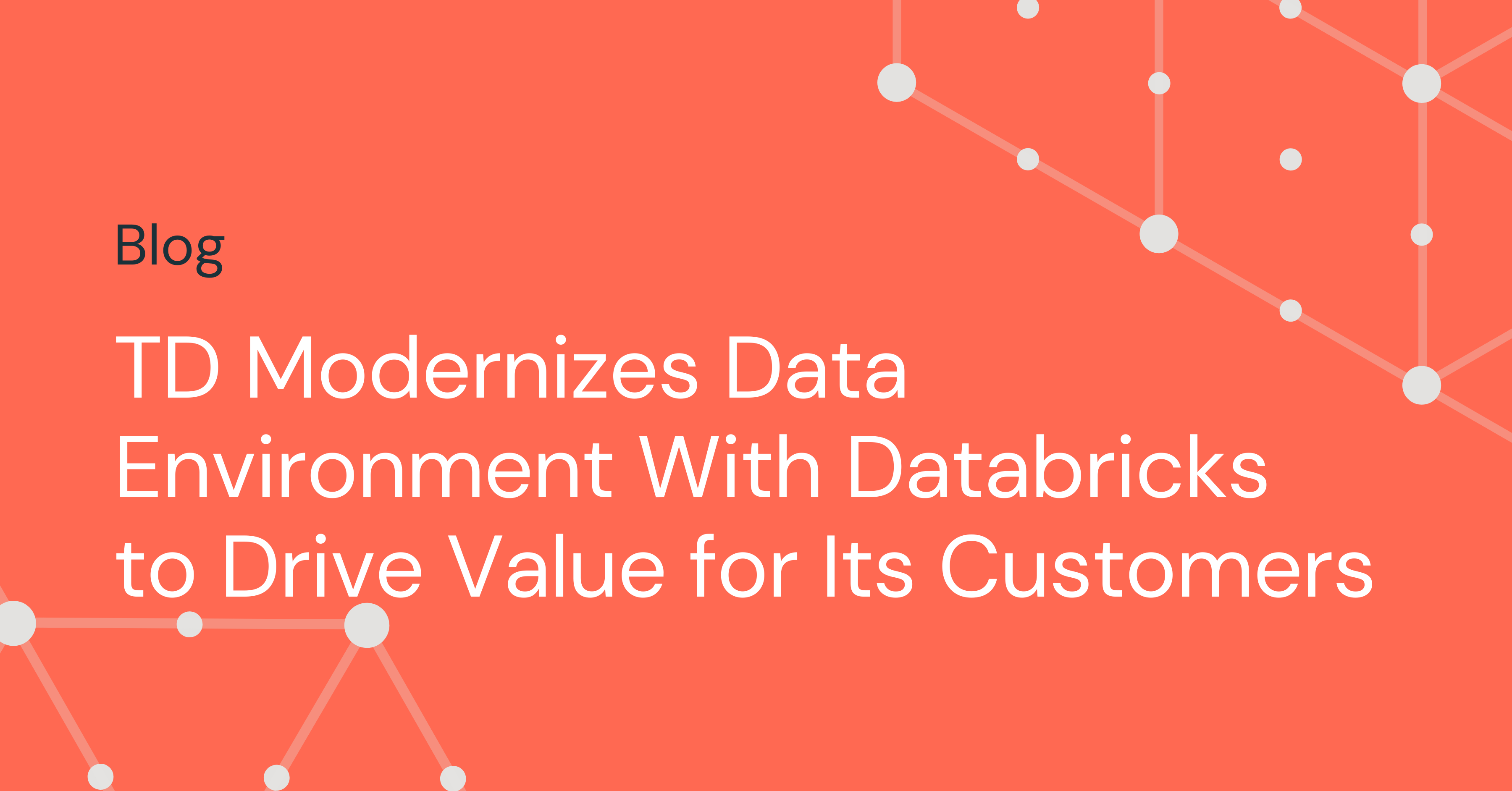TD Modernizes Data Environment With Databricks to Drive Value for Its Customers

Since 1955, TD Bank Group has aimed to give customers and communities the confidence to thrive in a changing world. While that order has grown taller and more complex with each passing decade, TD has consistently risen to the challenge.
This Q&A — between Junta Nakai, Global Head - Financial Services & Sustainability GTM at Databricks and Jonathan Hollander, Vice President, Enterprise Data Technology Platforms at TD Bank — highlights TD’s technology transformation journey and why they are transitioning to a new, modern data estate with Delta Lake and the Azure cloud, designed to boost analytical capabilities to help power enhanced customer experiences.
Through this transformation, they have been able to simplify their technology stack and put themselves in a position to extract the most value from their data for the betterment of their customers.
Junta: Tell us about the genesis of TD’s journey toward the cloud and what the drivers were that led you to this modernization effort?
Jonathan: Like many companies, TD was at an inflection point when we decided to establish a new data environment on the cloud. Based on the direction of the industry, we knew we would be better served to invest our capital in the transition to the cloud and the modernization of our development environments, which in addition would provide enhanced tooling and capabilities to our business end-users.
Junta: Can you share how you are currently using Delta Lake and the value the architecture has provided your organization?
Jonathan: Today, we’re predominantly leveraging Databricks in a couple of key ways: first, the creation of highly performant and reliable data pipelines for ingestion and data transformation at large scale. Second, we’re utilizing Delta Lake, which allows us to provide a single source of truth for our data.
Junta: How has the ability to federate your data allowed TD to more easily support downstream analytics and ML needs?
Jonathan: By centralizing our data, we will be able to give teams fast and secure access, enabling them to feed accurate and immediate analytics. We have 15,000 data pipelines in place that feed data to our Enterprise Data Lake and Curated assets, and we leverage a leading data visualization tool, so that our business community can access the latest and most accurate data through interactive dashboards and reports for better decision making. We’ve also built out a centralized Data-as-a-Service platform team that’s responsible for ingesting data from our systems of record into our Enterprise Data Lake, for the development of Curated data sets to support our business segments and enterprise functions, and to administer the tooling that supports data, analytics and reporting across the enterprise.
Junta: What’s been the most unexpected benefit of moving to Delta Lake?
Jonathan: That would be Recruiting. Competition for tech talent is at an all-time high and data engineers want to use the latest and greatest technologies. The Databricks platform has a unique ability to enable collaboration between different data teams working on exciting use cases that will help attract to TD the talented people we need to continue accelerating innovation.
Junta: Looking ahead, how will data analytics and ML continue to transform your business and what role will Databricks and the cloud have in that journey?
Jonathan: With Delta Lake and Azure as our foundation, TD is in a prime position to derive critical and real-time business decisions and unlock new customer insights. Next steps toward this vision include enhanced self-service analytics capabilities to empower our business stakeholders and analysts to make data-driven decisions to streamline operations, identify new market opportunities, and mitigate risk for our customers. Furthermore, making Databricks fully available across data engineering, data science and the business will fuel new cutting-edge use cases to boost operational efficiencies across our business and new customer-centric innovations — from personalized customer support to marketing products and services — that increase levels of customer engagement and drive value.
Interested in learning about how FSIs are using Databricks? Read about our Lakehouse for Financial Services.
Never miss a Databricks post
What's next?

Technology
December 9, 2024/6 min read
Scale Faster with Data + AI: Insights from the Databricks Unicorns Index

News
December 11, 2024/4 min read